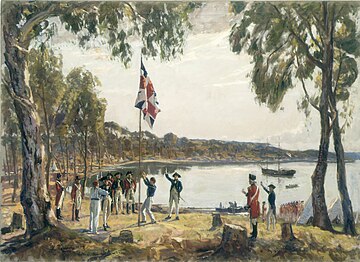IND/The Colonial Frontier
Dispossession
The timing, pace and extent of European encroachment varied enormously. Many parts of central, northern and Western Australia remained largely ‘untouched’ until the late nineteenth century. Organised Aboriginal resistance to the takeover of their lands continued in north-western and central Australia until the 1930s. There was not a single confrontation, but rather a series of violent engagements and massacres across the continent.
The intention and ultimate effect of the Frontier was to displace Indigenous people from, and dispossess Indigenous people of, their land. A repeated pattern of settlement involved parties exploring with stock and settling in an area. Stock caused damage to waterways and Indigenous food sources, displacing animals such as kangaroos. Felling of trees removed food sources in the plants themselves and the animals, such as possums, that lived in them. It also reduced the availability of resources such as certain types of wood, resins, string, medicines. The message that Indigenous people were not wanted on the land was very clear, with acts of violence and physical removal used.
Dispossessed Indigenous people, unable to support themselves adequately and often physically hunted, congregated at the edges of settlement towns, dependent on European charity. The loss of family and community members meant that not only were loved ones gone, but so were the holders of important knowledge concerning medicine, law and resources. Indigenous people, living in stressed circumstances, were exposed to exploitation and abuse. Indigenous people responded in a variety of ways to the destruction and ongoing erosion of their way of life; some suffered from despair and began abusing alcohol, others adapted and did what was necessary to survive.
In summary, the policies and practices of this era resulted in the:
- loss of land as spiritual base
- loss of land as an economic base and provider of food and medicinal resources
- massive loss of life (from an estimated population of up to 1.5 million in 1788 to approximately 150 000 by 1850)
- forced breakdown in social and cultural structures
- imposed identity and inferior status
- loss of mobility
- removal of children from their families
- socio-economic marginalisation
- political and legal powerlessness
